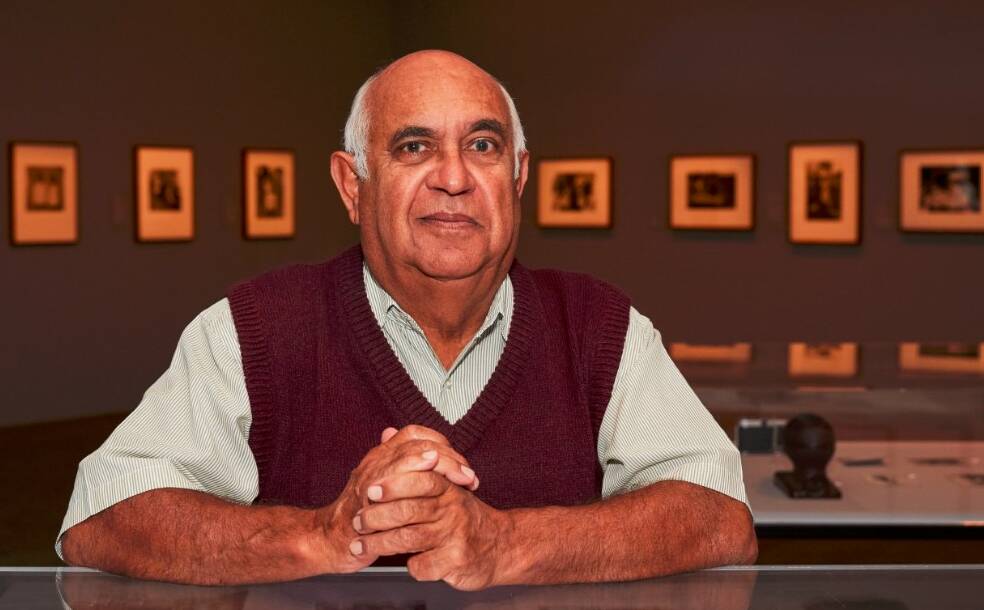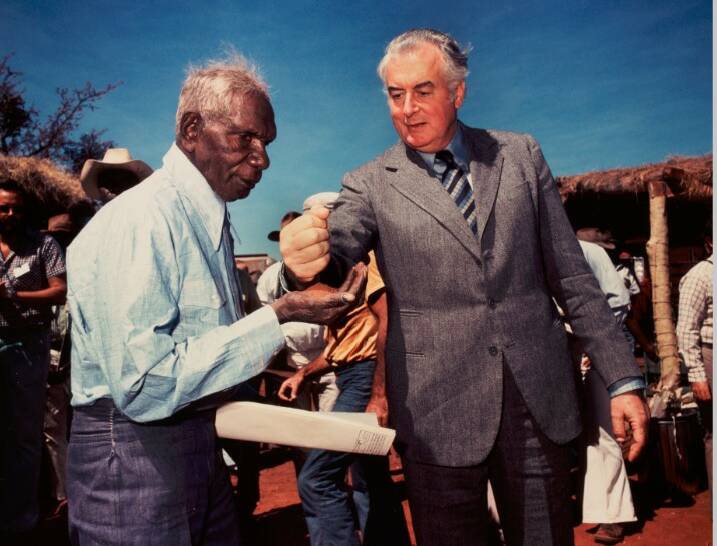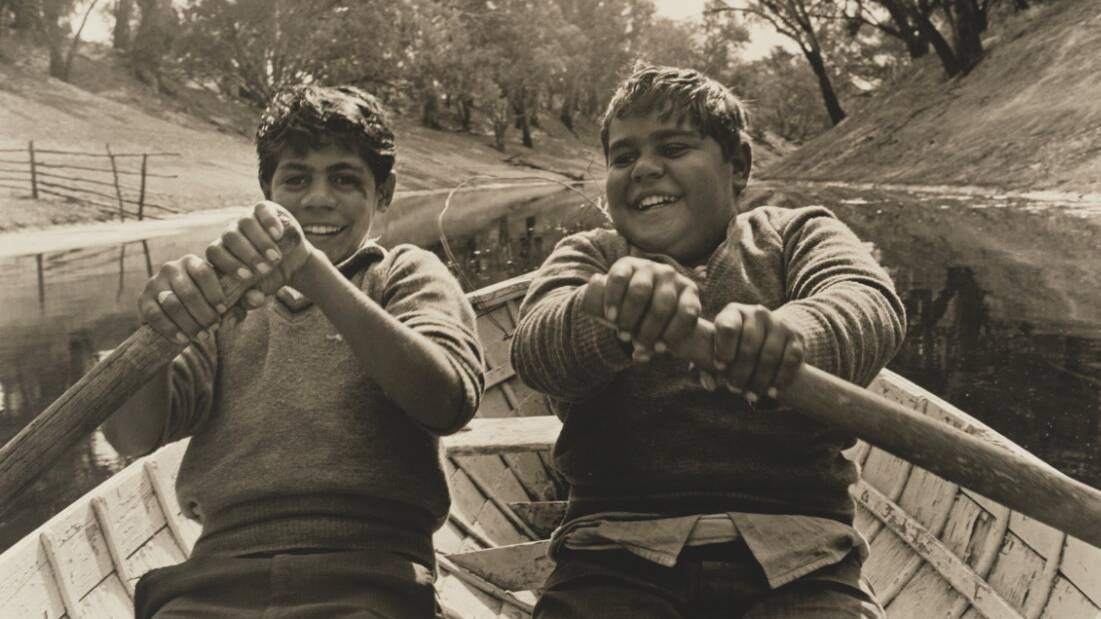Mervyn Bishop: the inspiring journey of Australia's first Aboriginal press photographer

This is branded content for the National Film and Sound Archive of Australia.
It's particularly apt that one of the features included in an exhibition celebrating one of Australia's most acclaimed and influential photojournalists is a reconstruction of a darkroom.
It was the boyhood experience of watching one of his photographs materialise in the red glow of a darkroom that "hooked" Mervyn Bishop and set him on his brilliant and passionate career path.
"I still remember my first print went into the developer and I saw it coming out - I thought that was just so magical, I was hooked instantly. I couldn't get enough," he says.
A darkroom that represents this pivotal point of Bishop's life is one part of the National Film and Sound Archive of Australia's latest exhibitions that combines some of his most iconic photos with archival film and audio material to create a rich telling of both his personal story and of the Australia he documented during his 60-year career.
At the time of that magical moment, Bishop was a ten-year-old boy growing up in Brewarrina. Encouraged by his mum, and initially using her camera, he would take photos of his family and friends, photos that became the subject of many neighbourhood slide nights.
In 1963 he left his home town, heading to Sydney where he successfully applied for a cadetship with the Sydney Morning Herald and became Australia's first Aboriginal press photographer. Eight years later he was named News Photographer of the Year.
Bishop went on to work at the Department of Aboriginal Affairs in Canberra in 1974 where he used the power of the camera to document major developments in Aboriginal communities. It was during this time he took his iconic 1975 image of the then Prime Minister Gough Whitlam pouring a handful of red earth into the hand of Vincent Lingiari, Gurindji elder and traditional landowner.

Spanning 60 years, the NFSA exhibition is drawn from the Art Gallery of New South Wales (AGNSW) collection, and the artist's private archive, along with audio visual material from the NFSA's archives creating an immersive journey into Bishop's life, career and community, and the times he was working in.
As well as Bishop's many images from his career as a photojournalist, there are personal images and film of family and friends, and intimate portraits of members of the Aboriginal community. The NFSA's archival footage of people like boxer Lionel Rose and singer Jimmy Little, who were household names, help create a fuller picture of Bishop's world.
Adding another layer is a documentary about Bishop's life and career by director Warwick Thornton, Bishop was a mentor to Thornton early in his career, and his influence is evident in Thornton's impressive cinematography work.
NFSA curator Tara Marynowsky, who worked closely with AGNSW curator Cody Edgar and Bishop to create the exhibition, said the aim was to celebrate the career of one of Australia's most talented photojournalists, as well as shine the light on a important moments in Australia's history.
"We wanted to ensure Mervyn's story was really strong and to also lead people into different stories with the audiovisual strengths of the NFSA," she said.
"Being able to hear the voices and see the faces in moving image gives a different sense of who they are and were at the time. It paints a wider picture of Mervyn's world.
"These sort of projects give us a chance to dig and deep dive into the amazing gems that we have at the NFSA that really resonate with audiences."

Part of the exhibition, "Man about Town", shows Bishop's high profile and influence as a photographer, and how he used that to raise awareness about important issues.
"Mervyn followed his dreams and touched upon some really important issues along the way," Ms Marynowsky said.
"That's what is so inspirational, I think, the way he's bought so many people together. He was the man with the camera who was able to give us access, through his lens and observations."
Bishop said he was glad to be able to share his life's work with the public.
"Photography has been my life, my passion for 60 years; the art and technique, the stories I've witnessed and captured," he said.
The Mervyn Bishop exhibition will be open at the National Film and Sound Archive of Australia until August 1, and is being complemented by a series of special events and public programs. Tickets are available at https://tickets.nfsa.gov.au/Events/mervyn-bishop
This is branded content for the National Film and Sound Archive.


